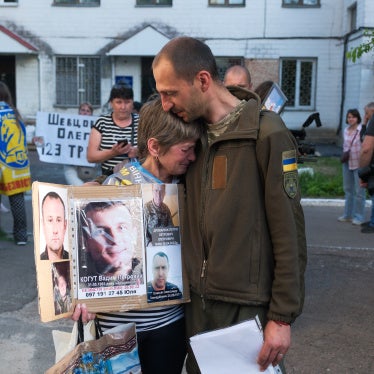Introduction
The Convention on Cluster Munitions establishes powerful international law to end the high human toll of cluster munitions. The convention's full potential, however, will be best realized by the passage of national implementation legislation by each state party. Article 9 of the convention requires states parties to take implementation measures, and adopting comprehensive national legislation is the strongest means of fulfilling this obligation.[1] National legislation enshrines the convention's provisions at the domestic level, where the process of implementation occurs. It reinforces the overall purpose of the convention while tailoring the key provisions to the circumstances of individual states parties. Some states may choose to rely on national policies instead of laws, but implementation legislation is important because it provides binding, enduring, and unequivocal rules that leave less room for interpretation.[2]
The Convention on Cluster Munitions aims to eliminate cluster munitions and the harm they cause to civilians.[3] It bans the use, production, transfer, and stockpiling of cluster munitions. It also requires states parties to address the existing problems attributable to cluster muntions, notably by clearing unexploded submunitions and providing victim assistance.
On May 30, 2008, at the end of negotiations in Dublin, 107 states adopted the convention; it opened for signature in Oslo in December of the same year. As of April 22, 2010, 106 states had signed the convention, meaning that they were obligated to uphold its object and purpose. Thirty-six of those states had taken the next step and ratified the convention, agreeing to become legally bound by all of its provisions.[4] The convention will enter into force on August 1, 2010, after which states will accede to, rather than sign and ratify, the convention; the effect, however, is the same.
In addition to passing laws allowing for ratification or accession, states should develop national legislation to implement the convention. The domestic law of some states requires them to pass legislation before ratification or accession; others may do so afterwards. Regardless, such legislation should cover all of the convention's core obligations, both negative and positive. The negative obligations, notably the prohibitions on use, production, transfer, and stockpiling outlined in Article 1, are largely disarmament oriented and designed to prevent future harm. The positive obligations, including clearance, victim assistance, and international cooperation and assistance, primarily further the convention's humanitarian goals and are aimed at alleviating present suffering. To fulfill the requirements of Article 9, each state party must implement both types of obligation.[5]
This paper enumerates elements that are essential to strong implementation legislation. In identifying and analyzing the essential elements, it draws from the language of the model law distributed by the International Committee of the Red Cross (ICRC Model Law)[6] and-given the similarities between cluster munitions and landmines and between the treaties banning these weapons-from Mine Ban Treaty implementation legislation. The paper also looks at implementation legislation for the Convention on Cluster Munitions that eight states (Austria, Germany, Luxembourg, Ireland, Japan, New Zealand, Norway, and the United Kingdom) have already passed.
Adopting the elements laid out below would fully and strongly implement the Convention on Cluster Munitions. They encompass the convention's prohibitions as well as all its major positive obligations, including stockpile destruction, clearance, victim assistance, international cooperation and assistance, transparency, facilitating compliance by other states parties, encouraging other states to join the convention, and promoting universal adherence to the convention's norms. They require penal sanctions and extra-territorial jurisdiction. The elements proposed here also address important interpretive issues, notably the strength of the convention's prohibitions during joint military operations; prohibitions on transit, foreign stockpiling, and investment; and the need to limit retention of cluster munitions. Legislation that includes these elements would be comprehensive and clear, uphold a state party's international legal obligations, and help ensure that the goals of the convention are met.
[1]Convention on Cluster Munitions (CCM), adopted May 30, 2008, Dublin Diplomatic Conference on Cluster Munitions, CCM/77, http://www.clustermunitionsdublin.ie/pdf/ENGLISHfinaltext.pdf (accessed June 1, 2010), art. 9.
[2] Article 9 allows for a variety of implementation measures including "legal, administrative and other measures." Ibid.
[3] The second preambular paragraph, for example, states that states parties are "[d]etermined to put an end for all time to the suffering and casualties caused by cluster munitions at the time of their use, when they fail to function as intended or when they are abandoned." Ibid., pmbl.
[4] For the current list of signatories and ratifying states, see Cluster Munition Coalition, "30th Ratification Milestone Reached," http://www.stopclustermunitions.org/treatystatus/ (accessed June 2, 2010).
[5] While Article 9 obliges each state party to impose penal sanctions to prevent prohibited activities, it also requires more generally that a state party "take all legal, administrative and other measures to implement this Convention." "To implement this Convention" requires implementing its positive as well as negative obligations. Convention on Cluster Munitions, art. 9 (emphasis added).
[6] International Committee of the Red Cross, Model Law, Convention on Cluster Munitions: Legislation for Common Law States on the 2008 Convention on Cluster Munitions, http://icrc.org/Web/eng/siteeng0.nsf/htmlall/cluster-munitions-model-law...$File/Model%20Law%20Clusters%20Munitions.pdf, (accessed June 1, 2010).




